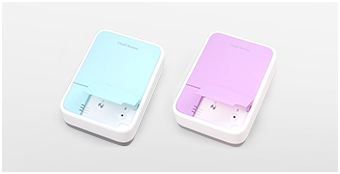Halitosis or Bad Breath is a problem that affects a high number of population (between 30 and 60%) and that describes any disgusting smell in the breath, either associated with oral cavity problems (85-90% of cases) or general health problems(10-15%). Usually is accompanied by psychosocial disorders and can even affect personal relationships, so that it has become into a great business for cosmetic and pharmaceutical industry.

Actually general dentist aren’t prepared for manage this pathology since they don’t have neither the instruments nor the correct training. Etiologic diagnosis is crucial, since no-objective-basis empirical treatments are ineffective.
The only method that is sable to set the origin of bad breath is gas cromatography, so that this is nowadays considered as gold standard. OralChroma can indentify and distinguish between Volatile Sulfide Compounds (VSC) that cause bad breath (Hydrogen Sulfuide,Methymercaptan and Dimethyl sulfide). It’s able to determinate gas concentration in units of ng/ml and ppb, while human nose can only detects gases from 150 ppb, resulting the OralChroma up to 150 times more sensitive.
The equipment is small, light, easy to carry and handle.
Although halitosis is a problem that involves lots of people, nowadays there isn’t a standard protocol about it diagnosis and clinical management.
Many patients ask for solutions, being the third cause of consultation in countries like U.S.A or Japan. Also it’s very common that worried patients roam different specialists without getting concrete and objective answers.
With a basic knowledge about bad breath causes and the appropriate equipment, it’s possible to establish simple treatments with a high success rate, resulting in a great increase in patient’s confidence and their consequent loyalty. Moreover it can be a potential method to attract them.
MT Enterprises is a widely known and reliable representative and distributor of various products in the Sensory Analysis Field such as Sensory Instruments (electronic nose, electronic tongue and electronic eye),FIZZ Software for conducting automated Sensory and Consumer Tests, ARCS Software which provides complete Panel Managment Solutions and Olfactory Port for GC.We also have products for measurment of Nuisance(Odour Pollution and Air Pollution) in Indoor and Outdoor Environments. Read More
